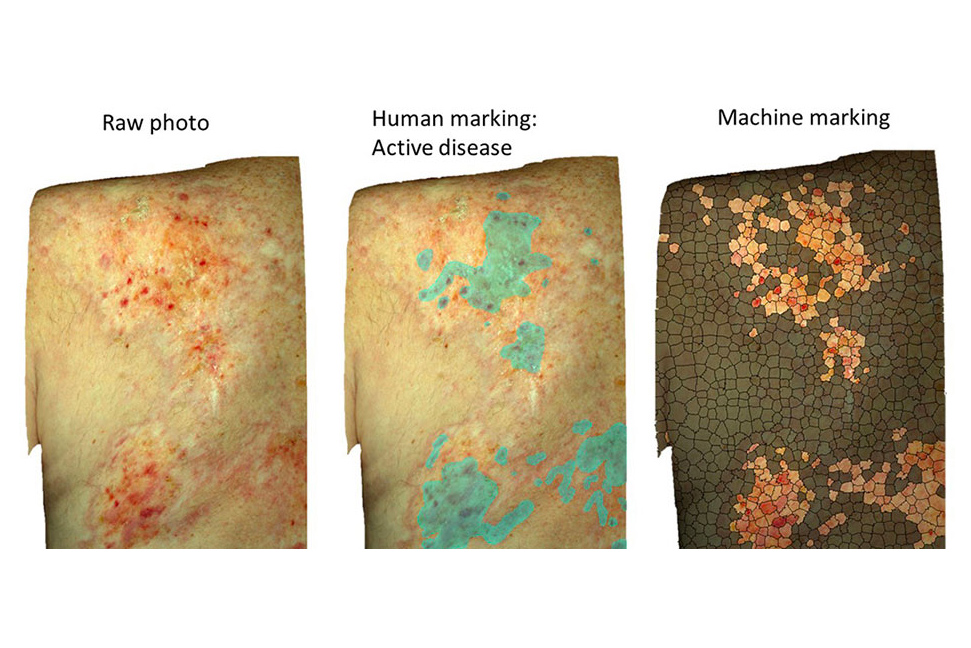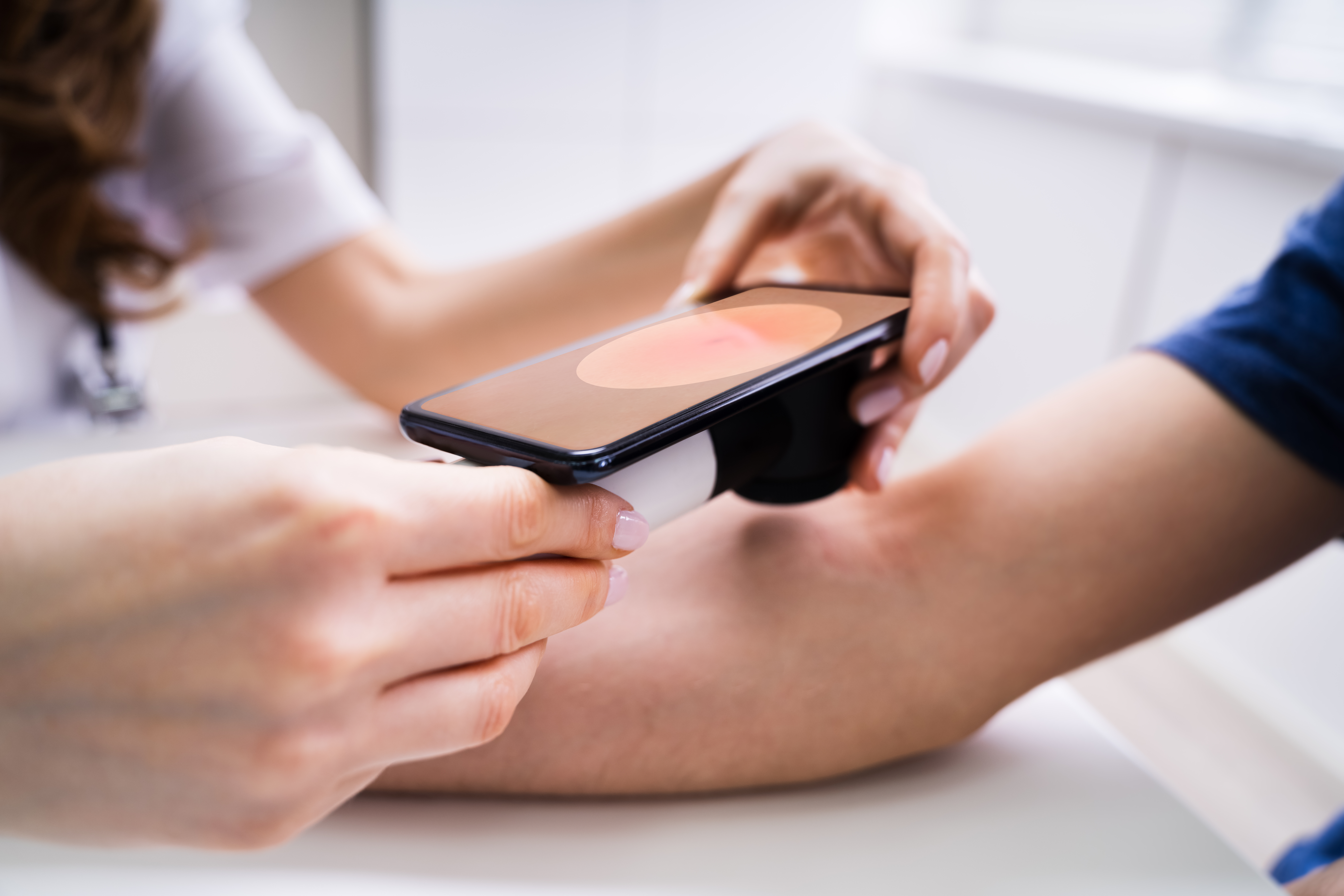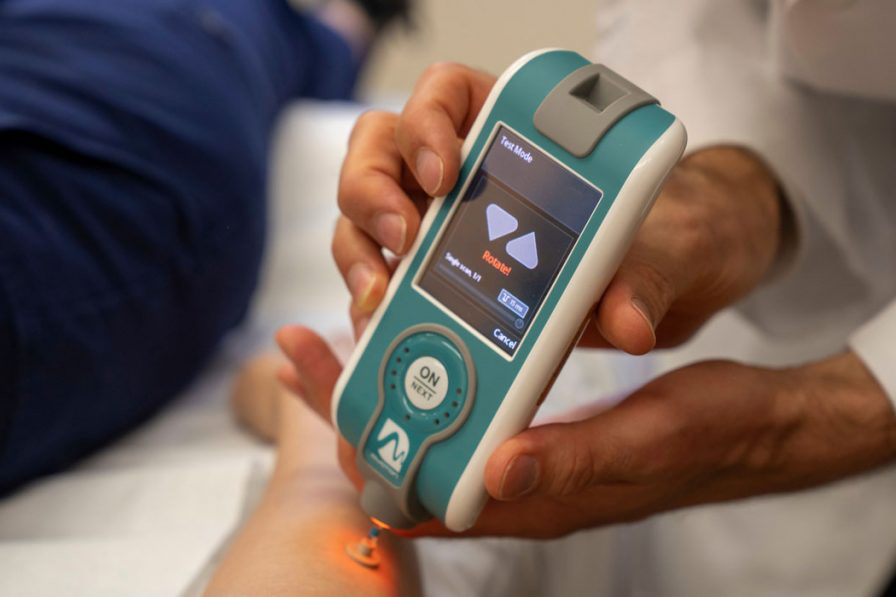The Vanderbilt Dermatology Translational Research Clinic (VDTRC) is focused on the development and clinical investigation of noninvasive methods to assess graft-versus-host disease (GVHD) in bone marrow / hematopoietic stem cell transplantation (HCT) patients. Occurring in most patients following allogeneic HCT, chronic GVHD (cGVHD) is the leading cause of long-term mortality and morbidity after this life-saving procedure.
Skin is the most commonly affected organ in cGVHD, with cutaneous disease occurring in up to 75% of patients at the time of diagnosis. Current cGVHD staging relies on physician estimation of involved skin body surface area, which suffers poor intra- and interrater reproducibility and is therefore insensitive to disease changes.
Skin manifestations of cGVHD are broadly divided into two categories, Erythema and Sclerosis. We use convolutional neural networks to measure Erythema from cross-polarized 3D photos calibrated in distance, color, and lighting. Additionally, we have completed initial clinical studies to assess Sclerosis with a unique handheld device that noninvasively measures soft tissue biomechanical properties (a modified “Myoton”). These interdisciplinary projects have benefited from the support of teams lead by strong collaborations across departments at Vanderbilt University Medical Center.

Fundamental Technology Research
Noninvasive imaging of human leukocyte dynamics
Leukocyte motion, such as rolling and adhesion to vascular endothelium, may provide important insight into inflammatory processes.
We are developing quantitative parameters to characterize this dynamic process noninvasively in patients’ skin by noninvasive in vivo reflectance confocal microscopy (RCM) and video analysis.
Clinical Translational Research

3D, Colorimetric, and Hyperspectral Imaging of Rashes
The VDTRC utilizes 3D photography with standard distance, lighting, and color calibration to measure and track changes in skin rashes. Additionally, we are exploring the added value of hyperspectral approaches. This will enable validation of novel treatments for challenging diseases both within dermatology and our collaborators from other medical specialties.

Artificial Intelligence and Crowd Sourcing for Photo Analysis
We are using artificial intelligence and crowd-sourcing to develop an objective, automated and quantitative method to analyze and demarcate images of cutaneous complications of systemic cancer treatments, with help from our collaborators in electrical engineering and biomedical informatics.

Skin Biomechanical Measurements in Sclerosing Disease
The VDTRC is exploring the clinical applications of the Myoton, a safe and painless device that can objectively measure biomechanical properties of soft tissues.
We are actively investigating skin stiffness measurements and how they correlate with patient symptoms and sclerotic disease progression.
